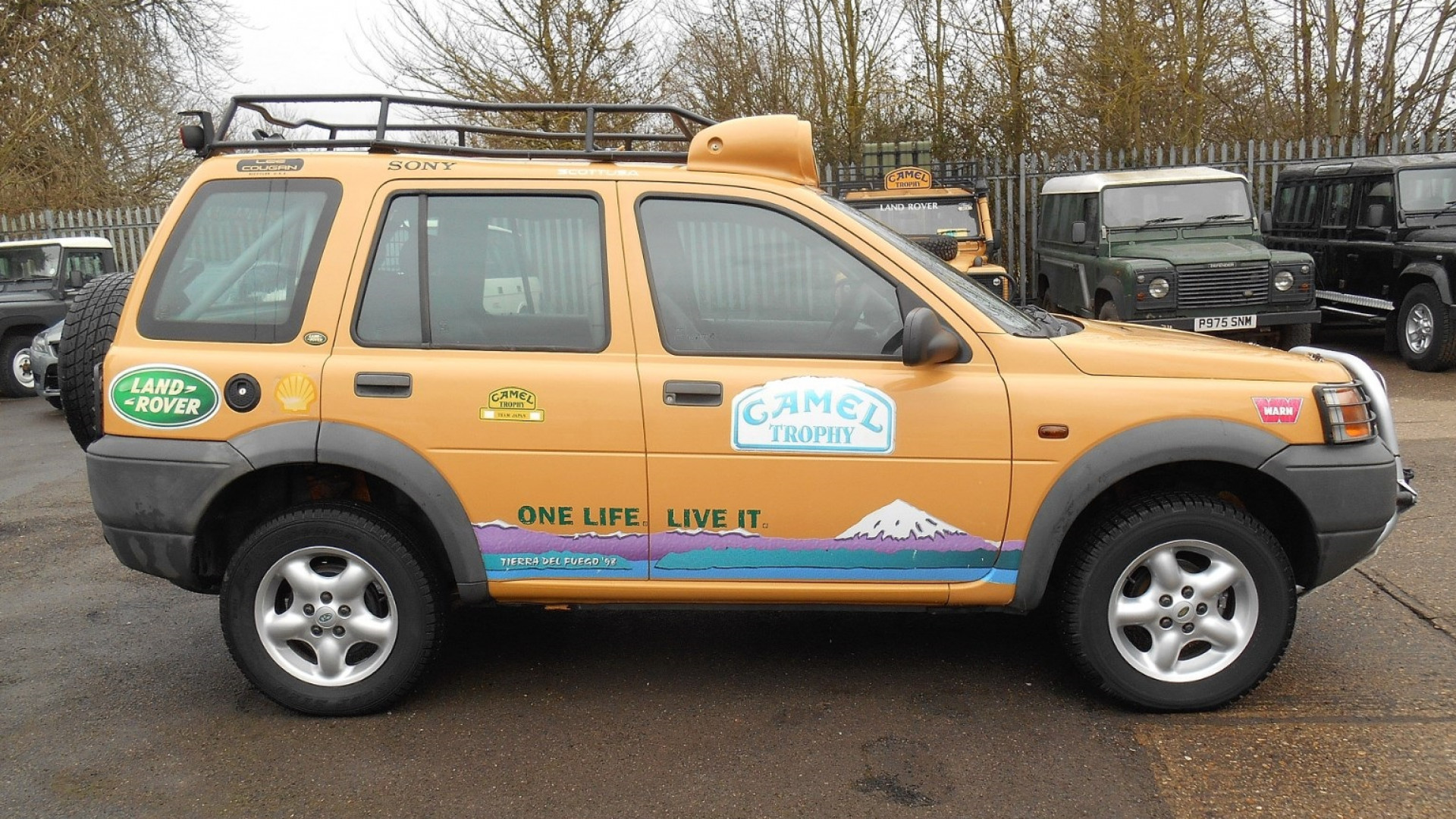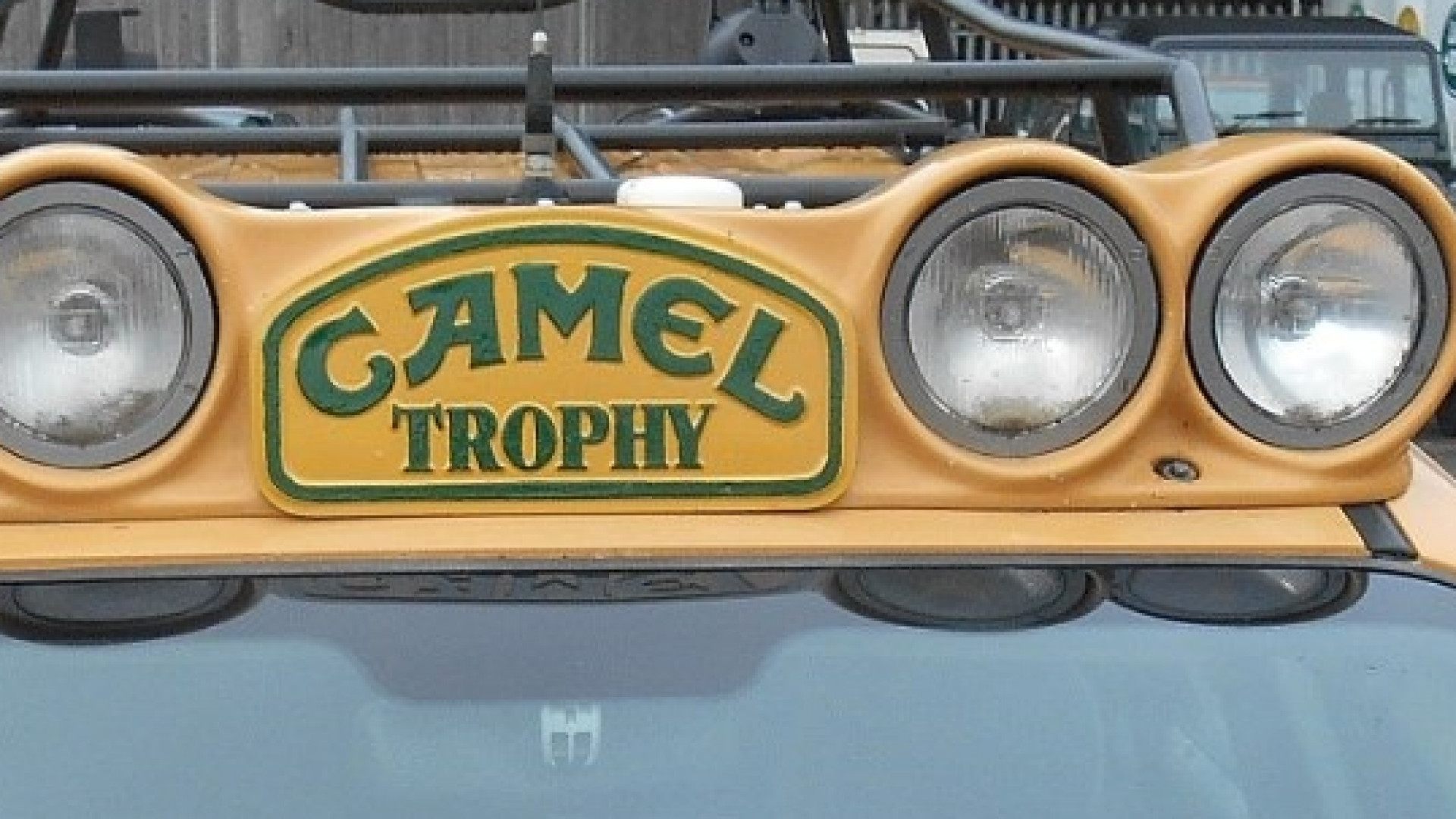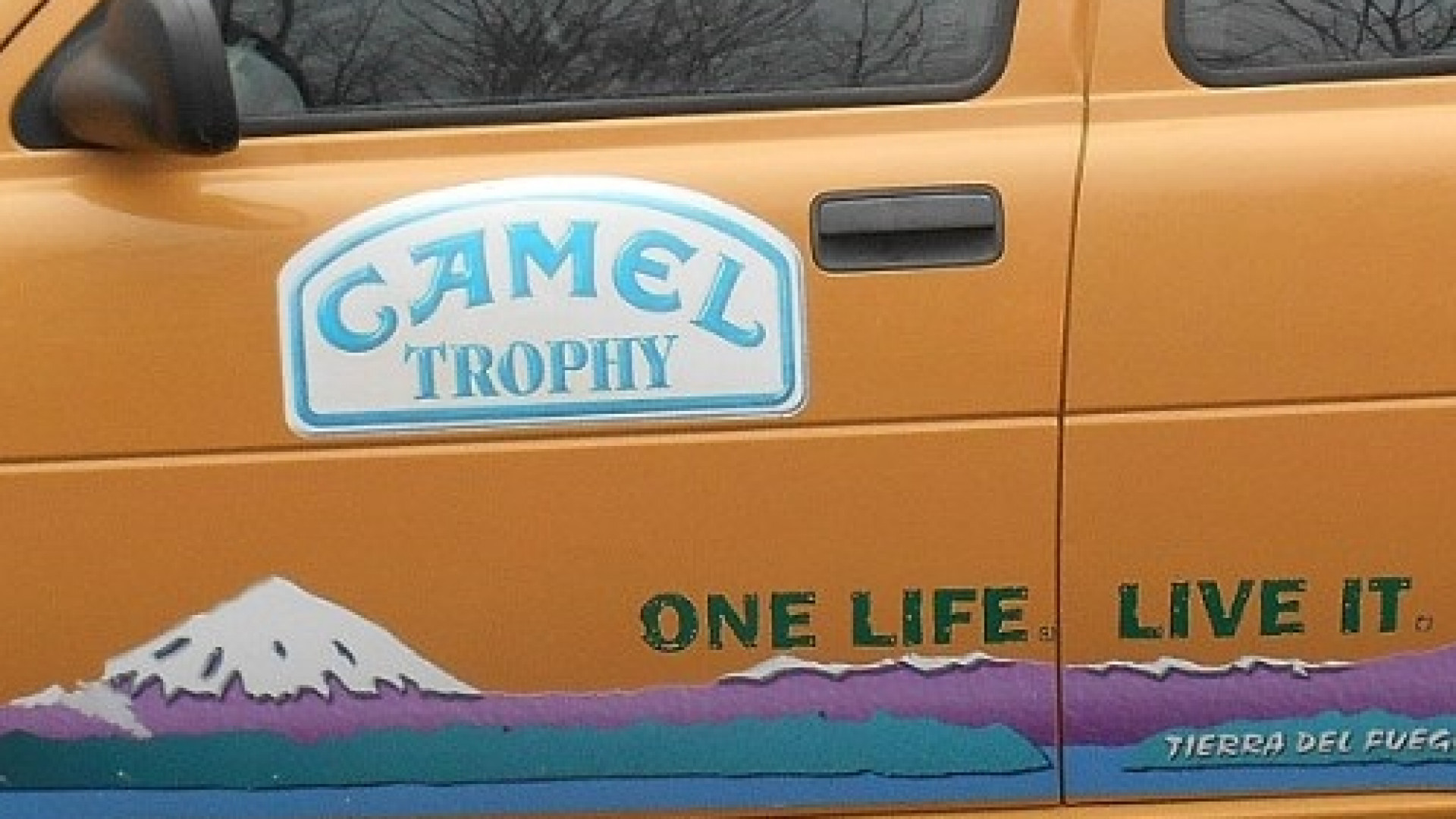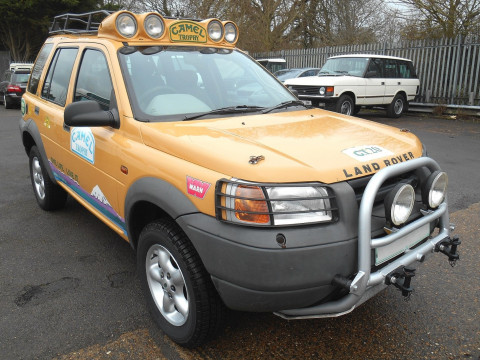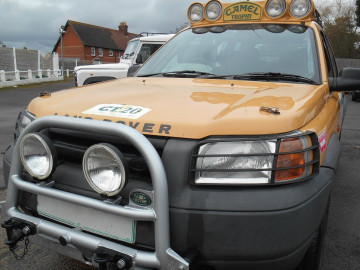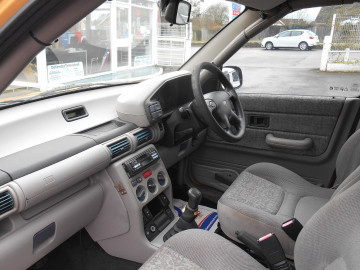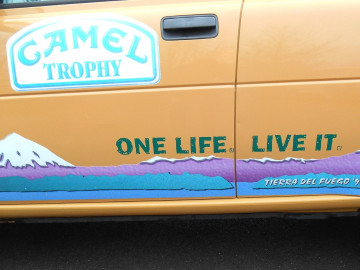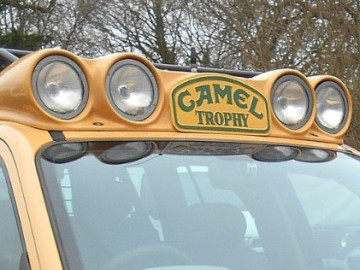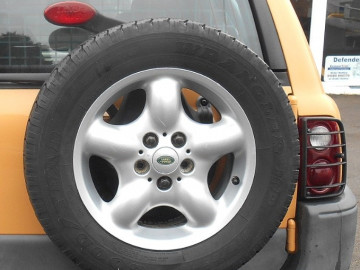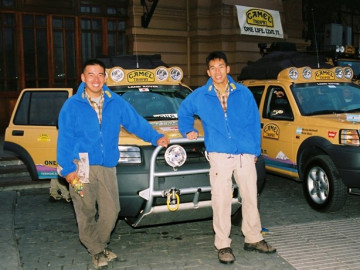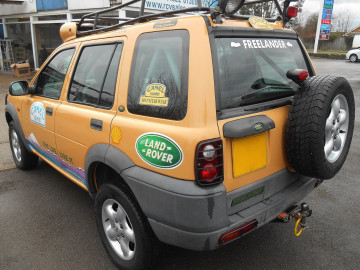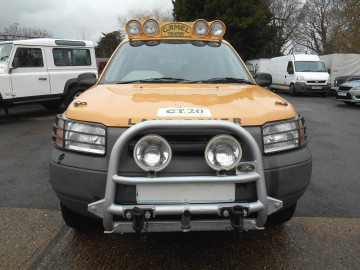One Life ... Live it !
Freelander: Camel Trophy preparation (1998)
No, your eyes do not deceive you. This is neither a Defender nor a Range Rover. It is, of course, an early Freelander. So why do we look after this vehicle which is firmly 'off message' as regards the collection's prime objectives! The answer is that we have a soft spot for any Land Rover with a fine pedigree.
We received a call asking whether we were interested in taking on board a vehicle that competed in the 1998 Camel Trophy adventure drive that took place in Tierra Del Fuego. The Camel Trophy represented an important slot in the annual Land Rover calendar during the 18 years 1981 to 1998. This annual extreme adventure drive took place competitively with teams drawn from all round the world. Land Rover provided support vehicles and competition cars for each team. The former were Defenders in all bar the first two years of sponsorship (when Range Rovers were the order of the day).
For the competitors Land Rover drew different vehicles each year from their most recently launched models. Accordingly, in 1998 Land Rover provided the 20 teams with Freelander, the newly introduced baby to their range. The aim was, of course, to prove the credentials of such a new vehicle within the wider Land Rover stable. They did that in spades as the 1998 Camel Trophy was the first to be held in winter months and the teams experienced temperatures reaching as low as -30C. Our vehicle was the Japanese team car. Sadly it wasn't the winning car - that honour belonging to the French team in 1998.
Our Freelander was manufactured in the first year of the model. Save superficial 'dressings', this was essentially a regular Freelander XEDi. Being focussed more on family use, the Freelander range was notably less rugged than its forerunners. It did however incorporate the first outing of the famed Land Rover Hill Decent Control. HDC was a ground breaking development (now taken for granted) whereby the electronics of the car would deliver a safe decent of a slope regardless of its surface conditions. It achieved this at a controlled 3 mph without any driver intervention, save steering, by the interplay of the traction control and anti-lock braking systems.
This car appealed to us not just because of its pedigree. It remains free from tampering (or over-restoration) such that its current suite of decals are all original and are displayed on the vehicle as it concluded its competition all those years ago. The only enhancement under our stewardship that we can boast of is the addition of a fresh Japanese pennant to identify the car's team identity. The dull paintwork disappoints some on first viewing, but this reflects the unmolested condition of the car. Land Rover used their cash sparingly and did not prepare the cars for longevity. Whilst the Sandglow paint applied was a 'brilliant gloss' on application, it was not designed to stand up to sunlight over the long term being a low cost cellulose base paint, or similarly cheap equivalent.
This exhibit therefore does contribute to our Land Rover story, representing the initial version of this important development in the Land Rover range and illustrating Land Rover's series sponsorship of probably the best known Global 4x4 Adventure Challenge. All be it sadly representing the last year of that sponsorship. Society's values and expectations had moved on and no further Camel Trophies were sponsored by Land Rover beyond 1998 (the 'Camel' branding relating to Camel Cigarettes!)
Part of:
Expedition Vehicles
The Collection
Vehicle Owner: On loan under the LRHC Exhibit Loan Scheme
Want to help take a look at our get involved pages.
Know something about this vehicle contact us.
